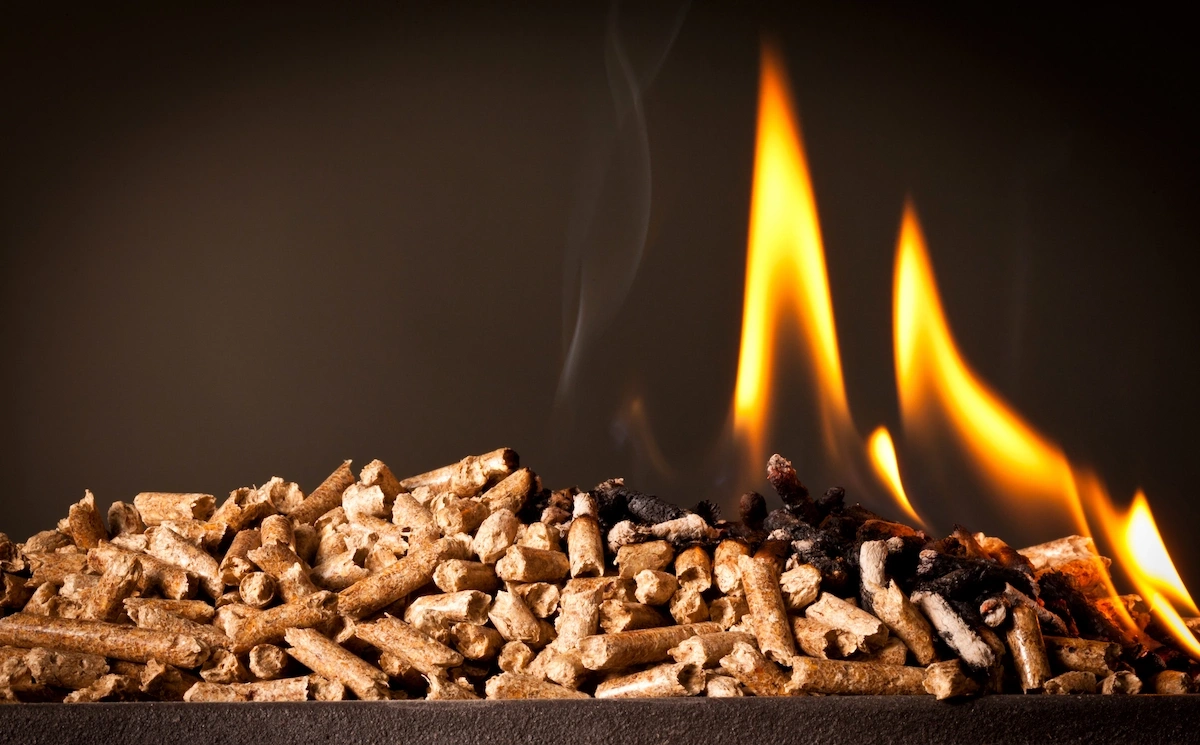
14-07-2025
Biomass Energy: How to Produce It and Its Benefits
Recently, the impact of climate change has become real. That’s why we need to reduce our dependence on fossil energy and the effects of global warming. One of the efforts we can take is to utilize renewable energy.
Among many renewable energies to choose from, you can start with biomass. Biomass is an alternative energy source that comes from organisms, such as agricultural waste. To find out the facts about biomass, read this article until the end!
What Is Biomass Energy?
Biomass is an organic material coming from organisms on Earth, such as animals and plants. Biomass energy can also come from intermediate products of living creatures, such as animal manure, organic agricultural waste, and many more.
Biomass energy does not require extraction from the Earth, just like non-renewable energy, making it more environmentally friendly. Moreover, organic waste and plant matter can be produced fast and in a sustainable manner, making it renewable.
Some examples of biomass are wood, chaff, charcoal briquettes, dry leaves, and others. They can be used as energy sources and fuels. When combusted, biomass produces heat or electricity, so it can be utilized as an energy source.
In Indonesia, the bioenergy potential, like biomass energy, is huge and a reliable future energy source. The Ministry of Energy and Mineral Resources mentioned that the potential for biomass in Indonesia is similar to 56.87 GW of electricity.
In addition, Statista revealed that world revenue from biomass power generation was equivalent to 11 billion dollars in 2022. This suggests that the biomass potential, both nationally and internationally, is considerable and could support sustainable energy sources in the future.
Read also: What Is the Impact of Using Eco-friendly Renewable Energy?
How to Produce Biomass Energy

Biomass can be obtained with various processes, such as direct combustion, biological conversion, chemical conversion, and thermochemical conversion. Here is the complete information you must know:
1. Direct Combustion
Burning biomass directly is one of the most common ways to utilize this energy. Generally, briquette biomass can be burned directly to heat water, factory machinery, turbines, and so on.
2. Biological Conversion
Biomass can also be gained from biological conversion, like a fermentation process. This process will produce ethanol from organic matter, which can be used as vehicle fuel. It can also produce biogas or renewable natural gas through anaerobic digestion, where microorganisms break down organic matter without the aid of oxygen.
3. Chemical Conversion
Chemical conversion is the most common method for making biodiesel. Biodiesel can be obtained from transesterification, converting cooking oil, plant fat, and animal fat into fatty acid methyl ester (FAME).
4. Thermochemical Conversion
Biomass can be processed thermochemically. Several methods can be used in this process, such as:
- Gasification: Gasification heats organic material at temperatures between 800 and 900 degrees Celsius. In addition, the material is introduced to oxygen or steam to produce carbon monoxide, called synthetic gas. The synthetic gas will be used for fuel.
- Pyrolysis: Pyrolysis heats organic materials at 400–500 degrees Celsius with almost no oxygen. The products of pyrolysis are charcoal, methane, renewable diesel, and bio-oil.
- Hydrotreating: This process uses hydrogen to process bio-oil from the pyrolysis at high temperature and pressure. Hydrotreating uses catalysts in the process. Examples of its products are renewable diesel, renewable jet fuel, and renewable gasoline.
Types of Biomass Energy
Biomass energy is usually categorized based on the material. Here are some types of biomass energy you should know:
1. Liquid Biomass
Liquid biomass, such as bioethanol and biodiesel, is commonly derived from plant oils, sugarcane, and corn. Liquid biomass is used for vehicle fuel.
2. Solid Biomass
Solid biomass is a common biomass product for heaters and power plants. This alternative energy is obtained from bran, wood, sawdust, and straw.
3. Gas Biomass
Biomass gas, such as biogas, is obtained from a fermentation or gasification process. Biomass gas is often used for heating fuel and electricity generation.
Examples of Biomass Energy
You can get an organic biomass energy source from your surroundings. Below are some examples of biomass materials you can use for making fuels:
1. Energy Source Plants
The first example is an energy source plant, such as hemp, corn, soybeans, and wheat. These plants can be developed into fuels, such as ethanol and biodiesel.
2. Living Creatures' Manure
The next example is manure, either human or animal. Living creature waste can be utilized as biogas, which is used for household purposes and power generation.
3. Wood
Woods, either logs, wood pellets, or wood chips, can be used to produce biomass. Typically, wood is used as charcoal briquettes for cooking and operating steam power plants.
4. Agricultural Waste
Agricultural waste is also often used for biomass. Some commonly used agricultural wastes are crop dregs, livestock manure, and straw. Biomass from agricultural waste is commonly used as fuel.
Benefits of Biomass Energy

Biomass comes from organic materials, making it more eco-friendly than other energy. Moreover, biomass gives several benefits for the environment and humans, such as:
1. Reducing Organic Waste
Biomass is an energy source from organic waste, such as manure, plant dregs, and others. Those wastes can be processed into biogas or biodiesel, reducing waste generation.
2. Renewable Energy Source
Utilizing biomass aims to lessen our reliance on fossil fuels and other non-renewable energy sources. As a result of alternative energy sources like biomass, we are not concerned about future energy shortages.
3. Supporting Local Economy
Biomass production in the neighborhood can create jobs and train the locals to make alternative energy. The locals can work in the agricultural or operational sectors to stop relying on energy imports.
That concludes the information about biomass you can learn. The use of renewable energy, like biomass, must continue to be spread to reduce the impact of climate change.
Aside from biomass energy, you can also use other alternative energy like solar panels. Regarding this, you can entrust it to Krakatau Chandra Energi (KCE). This subsidiary of Chandra Asri Group provides electrical, power, and solar panel services. There are three types of solar panel installations at KCE, namely off-grid, on-grid, and hybrid.
What are you waiting for? Fulfill your energy needs wisely with Krakatau Chandra Energy!
Read also: What Is Water Resource Management and Why Is It Important?